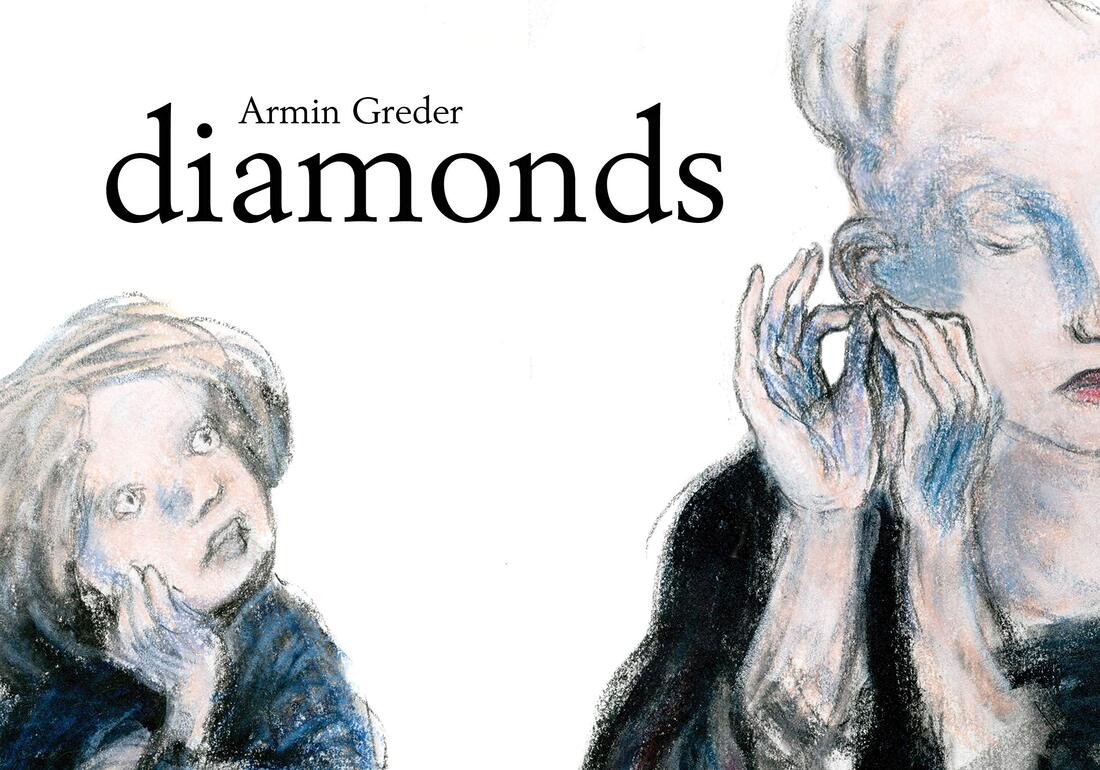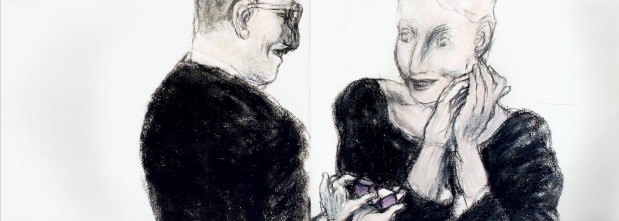By: William Bintz & Meghan ValerioPicture books are for everybody at any age, not books to be left behind as we grow older. (Anthony Browne, 2019)
This intriguing diamond industry story depicts the controversial journey of diamonds from source to customer, including the appalling conditions, black market, and blind ignorance of customers rich enough to purchase them. It is a disturbing and evocative depiction of how the diamond industry, historically and contemporaneously, feeds an insatiable appetite for diamonds, and in the process, also perpetuates inequality, conflict, and corruption. Metaphorically, this visually unsettling book removes the sparkle from diamonds. Diamonds (Greder, 2020) is not a novel, short story, nor poem. It is a picturebook, with approximately 32 pages, minimal text (195 words), and single and double-spread illustrations. It is not, however, a traditional picturebook – it is a crossover picturebook (see Table 1 for more examples).
Benefits of Crossover PicturebooksCrossover picturebooks invite teachers to shift perspectives and think differently about the nature of childhood and the purpose of curriculum. In terms of childhood, crossover picturebooks posit that teachers Never Read Down, Always Read Up to children. Reading down sees the child as innocent and in need of protection; reading up sees the child as capable of understanding sophisticated topics (Dressang & Kotrla, 2009). Reading down suggests that limiting or eliminating access to controversial issues protects the innocence of children; reading up conceives the danger of withholding information from youth as exceeding the danger of providing it (Dressang, 1999). Curriculum utilizing crossover picturebooks is rooted in an inquiry-based model. This model builds on curiosity and supports inquiry for teachers and students. Within this model, instruction based on crossover picturebooks:
A Concluding, But Not Final, ThoughtPicturebooks are synonymous with children’s literature. But is this a necessary condition of the art form itself? Or is it just a cultural convention, more to do with existing expectations, marketing prejudices and literary discourse? There is no reason why a 32-page illustrated story can’t have equal appeal for teenagers or adults as they do for children (Tan, 2003, np). We end with a concluding, not a final, thought, because we hope this post will start new conversations, not close them down. This thought is eloquently expressed by internationally renowned author and illustrator, Shaun Tan. Yes, picturebooks have been, and continue to be, synonymous with children’s literature. Is it time to shift perspective and think differently about this kind of literature? If so, we believe crossover picturebooks are a good conversation starter for readers of all ages. References
Meghan Valerio is a doctoral student in Curriculum and Instruction with a Literacy emphasis at Kent State University. Meghan’s research interests include investigating literacy and cognitive development from a critical literacy perspective, centering curricula to understand reading as a transactional process, and exploring pre- and in-service teacher perspectives in order to enhance literacy instructional practices and experiences. William Bintz is Professor of Literacy Education in the School of Teaching, Learning, and Curriculum Studies at Kent State University. His professional interests include the picturebook as object of study, literature across the curriculum K-12, and collaborative qualitative literacy research. Comments are closed.
|
Authors:
|
CLA
About CLA
|
Journal of Children's Literature
Write for JCL
|
ResourcesCLA-sponsored NCTE Position Statements
|
Members-Only Content
CLA Video Library
|
© COPYRIGHT 2018.
ALL RIGHTS RESERVED |



 RSS Feed
RSS Feed